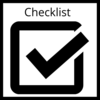Your steps
Click on the steps to expand or collapse. Expand All Steps (+)Step 1: Understand your assignment
Percent time spent on this step: 5%
Annotated bibliography assignments are common but they can vary in format and scope depending on their purpose and the instructor's preferences. Make sure you know what is required in your case.
Each entry in an annotated bibliography consist of two parts:
1) The citation contains bibliographic details about the source, such as the author, title, and date of publication. These details are formatted in a particular citation style, such as APA, IEEE, Chicago, Notes & Bibliography, or MLA.
2) The annotation is typically one to two paragraphs that describe and evaluate the source.
For more explanation and examples of annotated bibliographies, see the Annotated Bibliographies guide.
If there are elements of the assignment you don't understand, ask your instructor or teaching assistant for clarification.
Step 2: Choose a topic for your bibliography
Percent time spent on this step: 10%
Your topic should interest you and match the scope and requirements of the assignment.
Two short guides from the Writing and Communication Centre can help you decide on a topic and develop a research question. To learn more about the difference between everyday and academic research, check out this interactive module from the Libraries.
If you are having trouble deciding on a topic, contact your instructor, arrange a meeting with a subject librarian, or meet with a specialist from the Writing and Communication Centre.
Step3: Find sources
Percent time spent on this step: 25%
The items you select to include should relate to the overall topic/theme of your annotated bibliography. Here are 3 tips to help you get started and stay on track.
1) Consult a subject-related research guide. The Library's research guides help you target material in specific fields. For example, if your topic relates to the political engagement of new Canadians, the Political Science Research Guide points to resources that track political science-related publications. Or, if your topic is on the legalization of performance enhancing drugs, the Recreation and Leisure Studies Guide points to resources that track publications in that discipline.
The guides can help you effectively search the Libraries catalogue, specialized databases, and websites. They can also connect you with the liaison librarian with research expertise in the areas you are exploring.
2) Collect the materials you've identified as showing promise. If they are online, save links or download them directly from the catalogue, databases, or the Internet.
If they are print materials such as books or government documents, request them through the catalogue using your WatID and password. You can indicate which libraries' location you want the item(s) to be delivered to.
3) Keep track of the citation elements for each source, such as the author, article title, journal title, and date of publication. You will need this information to form complete citations for the items you include in your annotated bibliography.
Step 4: Evaluate your sources
Percent time spent on this step: 15%
Examine the materials you have collected and decide which ones you want to include in your bibliography. Assess the content and quality to decide whether the sources are worth including. The RADAR method, introduced in the RADAR Framework module, can help you consider the relevance, authority, date, accuracy, and the reason for its creation.
As you read your sources, take notes about important elements such as the main arguments or hypotheses, the theoretical frameworks the author uses or the design of their study, and the findings or conclusions. Is there anything you find questionable, such as weak links in an argument, or a small sample size for a study? What are the strengths of the work? How is it specifically useful to your research topic or question?
If you need to do more extensive source evaluation, consult the Libraries' Assessing Source Quality (beyond RADAR) module for guidance.
Step 5: Write and revise
Percent time spent on this step: 30%
Construct citations for each of the sources using the required citation style (e.g., APA, Chicago, MLA).
Next, for each citation, draft a short annotation by considering your notes about the source. You will want to both summarize and analyze the source:
- Describe the content and focus of the source.
- Evaluate its methods, conclusions, or reliability.
- Convey your impressions of the work and explain why it is worth including.
After you have written a full draft, put it aside for a while. When you return to it, re-read what you wrote and consider how to make it stronger. Does each item contribute to your research topic? Can you be clearer or more concise? Have you missed anything important? Does it flow well?
Step 6: Proofread and polish
Percent time spent on this step: 15%
After you are satisfied with how the annotations sound, put your assignment aside again. When you return to it, you will look for errors in punctuation, grammar, and other mechanics. You should try to read through it several times and proofread from a hard copy at least once.
Ensure that:
- the citation for each entry is complete and in the proper bibliographic style.
- each annotation is clear and error-free.
- your paper is formatted appropriately and meets the assignment requirements.

